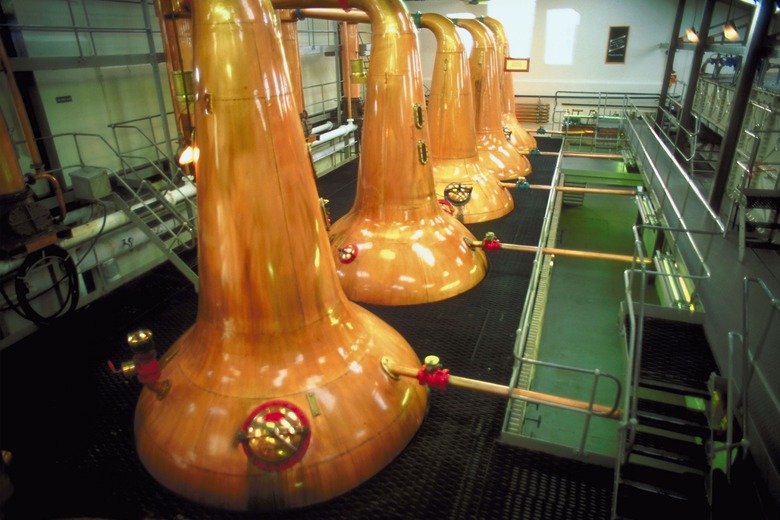How To Calculate A Distillation System
Distillation is the process of separating two or more liquid compounds from a mixture by boiling. Since different substances boil at different temperatures, the vapor produced by boiling at a specific temperature will have a different concentration of compounds than the original liquid. The process was first used on a wide scale back in the 12th century to increase the alcoholic content of fermented beverages. In the modern world, distillation is also used to separate various compounds in crude oil into more usable substances. In addition, it has uses in the chemical and pharmaceutical industries. Successful distillation requires the calculation of several aspects of the compounds and liquids, including the relative volatility, the mole fraction in the distillation vapor, the percent recovery and the distillation efficiency.
Step 1
Divide the vapor pressure of one substance in the liquid by the vapor pressure of the other substance to obtain the relative volatility. Both the vapor pressures and the relative volatility will vary according to the temperature of the liquid. Substances can be distilled more easily at higher relative volatilities, since there is a wider separation between their boiling points.
Step 2
Calculate the mole fraction of a compound in a vapor using the formula y = (ά * x) / {1 + (ά -1) * x}, where "ά" is the relative volatility, "x" is the mole fraction of the substance in the liquid and "y" is the mole fraction of the substance in the vapor. This calculation will tell you the expected proportion of the desired compound in the distilled vapor.
Step 3
Determine the percent recovery of the distillation by dividing the amount of distilled liquid recovered from the vapor by the original amount of the liquid. This tells you what proportion of the original liquid has been distilled into the more concentrated substance.
Step 4
Calculate the efficiency of the distillation using the formula (%A + %B) / (%A + %I + %B), where %A is the percent recovery of the pure liquid at the low boiling point, %I is the percent recovery at the intermediate boiling point, and %B is the percent recovery at the high boiling point.
Cite This Article
MLA
Walker, Talmadge. "How To Calculate A Distillation System" sciencing.com, https://www.sciencing.com/calculate-distillation-system-12133693/. 24 April 2017.
APA
Walker, Talmadge. (2017, April 24). How To Calculate A Distillation System. sciencing.com. Retrieved from https://www.sciencing.com/calculate-distillation-system-12133693/
Chicago
Walker, Talmadge. How To Calculate A Distillation System last modified March 24, 2022. https://www.sciencing.com/calculate-distillation-system-12133693/
